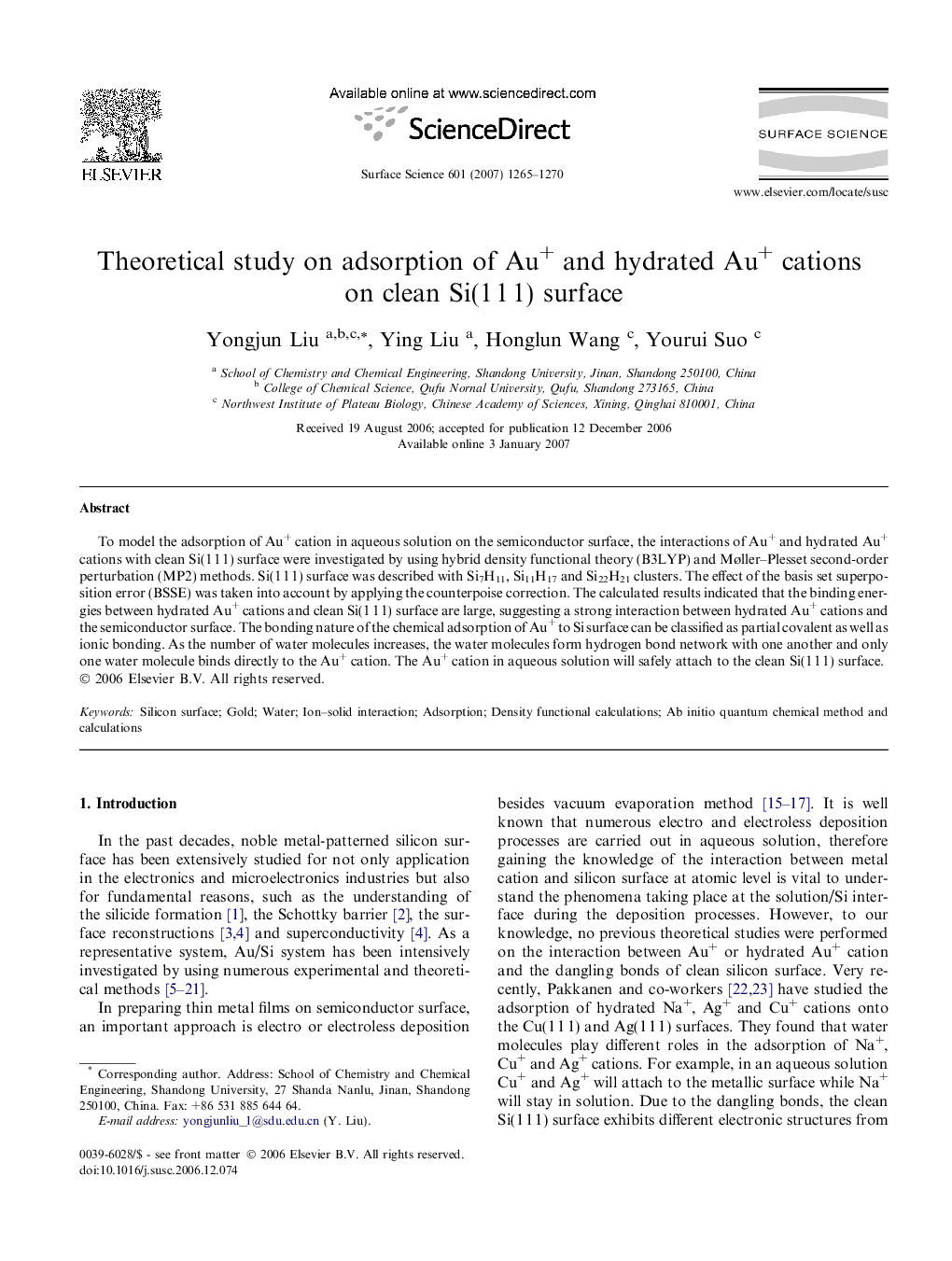| Article ID | Journal | Published Year | Pages | File Type |
|---|---|---|---|---|
| 5426070 | Surface Science | 2007 | 6 Pages |
To model the adsorption of Au+ cation in aqueous solution on the semiconductor surface, the interactions of Au+ and hydrated Au+ cations with clean Si(1 1 1) surface were investigated by using hybrid density functional theory (B3LYP) and Møller-Plesset second-order perturbation (MP2) methods. Si(1 1 1) surface was described with Si7H11, Si11H17 and Si22H21 clusters. The effect of the basis set superposition error (BSSE) was taken into account by applying the counterpoise correction. The calculated results indicated that the binding energies between hydrated Au+ cations and clean Si(1 1 1) surface are large, suggesting a strong interaction between hydrated Au+ cations and the semiconductor surface. The bonding nature of the chemical adsorption of Au+ to Si surface can be classified as partial covalent as well as ionic bonding. As the number of water molecules increases, the water molecules form hydrogen bond network with one another and only one water molecule binds directly to the Au+ cation. The Au+ cation in aqueous solution will safely attach to the clean Si(1 1 1) surface.
